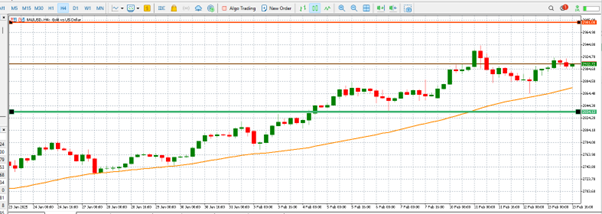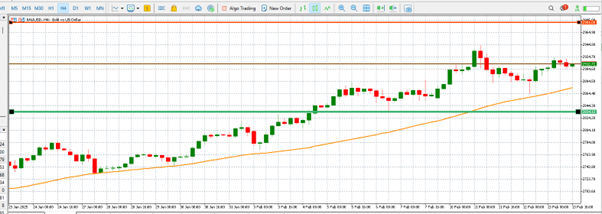Globally political and economic events have lately displayed volatility in gold prices. Today, several significant events define the view of gold as markets closely monitor growing inflation, interest rate decisions, and political dynamics. The future of gold prices is much influenced by recent diplomatic calls between Donald Trump and Vladimir Putin, remarks from Federal Reserve Chairman Jerome Powell, and the most current U.S. economic statistics.
Geopolitical Harmony and Its Effects on Gold Prices
Geopolitical unrest has always helped gold as investors typically flee to the precious metal under stress. Recent events, like the conversation between Russian President Vladimir Putin and former U.S. President Donald Trump, have reduced some of the geopolitical concerns affecting markets, nevertheless. Both presidents spoke about bettering ties, therefore indicating a possible de-escalation of tensions between two big world powers.
Although gold usually increases in times of geopolitical uncertainty, the lack of such conflicts might help to propel economic development. Gold may gain from new demand as investors diversify and hedge against possible inflation if tensions relax and nations concentrate more on trade and economic recovery. Under such circumstances, gold may be a protective asset during times of economic optimism as well as a buffer against uncertainty. Rising demand for gold might come from people trying to protect wealth from inflationary pressures as world economies heal.
This worldwide tilt away from the dollar might drive a surge in demand for gold as governments and investors hunt for alternatives to the U.S. currency.
Federal Reserve Policy and its Impact on Gold Prices
The posture of the U.S. Federal Reserve is among the most important determinant of gold prices. The Fed Chairman, Jerome Powell, recently said that it is doubtful the central bank will alter its monetary policy very soon. Powell's remarks imply that the Fed will preserve its hawkish posture and raise interest rates to help to lower growing prices even if inflation still causes concerns. This strategy limits the possibility for notable increase in gold prices since higher interest rates make non-yielding assets less appealing.
With gold hanging around $3,000 per ounce right now, the upside seems restricted until the market circumstances change significantly. Because investors may get an income in other assets, high interest rates provide an opportunity cost for storing gold. The Fed's strategy must change if gold is to surpass this ceiling either by adjusting interest rate policy or by changing more general economic conditions that would benefit gold.

The above gold trading chart by Exness
Trump's Impact on the Federal Reserve: A Possibly Transformational Agent
Though the Fed is not expected to modify its approach soon, political personalities like Trump might nevertheless impact the situation. Trump has been outspoken about his displeasure with Fed interest rate decisions and has used trade policies—including tariffs—as negotiating leverage. If Trump were to harness his political power to advocate for a more dovish attitude from the Fed, it may lead to a drop in interest rates. A more dovish Fed would probably devaluate the U.S. dollar, thereby enhancing the attraction of gold as a substitute asset. Should rates be lowered and the dollar weaken, this possible change may serve as the impetus for increased gold prices.
American Economic Data: PPI
The U.S. economic data today adds still another level of complexity to the gold projection. The U.S. Producer Price Index (PPI) for January came in at 0.4%, slightly above the consensus expectation of 0.3%. This higher-than-expected PPI shows that inflationary pressures are continue at the wholesale level, perhaps translating to higher consumer prices in the coming months. For gold, constant inflation is favourable since many turn to the metal as a defence against growing prices.
In summary,
From geopolitical events to economic data and central bank policy, a range of elements shapes gold's price behaviour. Geopolitical tensions easing, especially after the Trump-Putin call, could lessen the immediate attraction of gold as a safe-haven asset. This could, however, also lead to a more favourable environment for economic development, which would raise demand for gold as an inflation hedge.
The case for gold is strengthened even more by the turn towards China and the declining demand for the U.S. dollar as a reserve currency. As governments seek alternatives to the dollar, gold's attractiveness as a store of value strengthens. Meanwhile, the Federal Reserve’s position on interest rates continues to restrict the potential upside for gold, but Trump’s influence might shift this dynamic and drive gold prices higher. Finally, today’s U.S. economic data, including the PPI and unemployment claims, shows that inflationary pressures persist, giving continuous support for gold’s position as a hedge against increasing prices.
While the upside for gold may be constrained in the short term, its position as a store of wealth and a hedge against economic instability remains vital in today’s global economy. Gold prices will remain much shaped by the changing political and economic environment, thus it is advisable to keep close observation in the next months.
